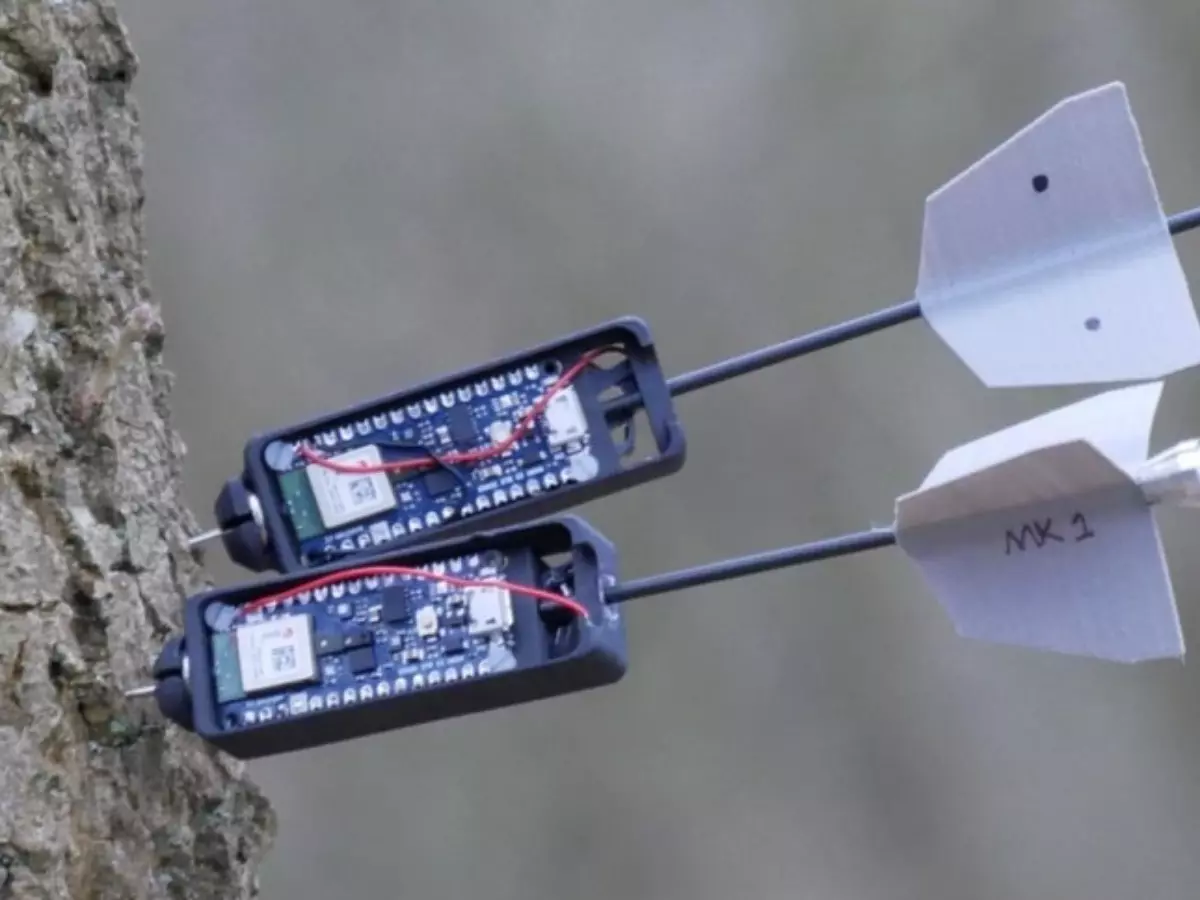Drones That Shoot Sensor Darts In Tall Trees Will Give Forest Health Data
Researchers at Imperial College Londons Aerial Robotics Lab have developed drones that can shoot darts containing such sensors onto trees several meters away. The method can be used to place sensors high atop tall trees even in cluttered forest regions. The accurate placement of sensor nodes using UAVs opens opportunities for many industrial and scientific uses.

In today¡¯s world, several aspects of forests are monitored using sensors. These wireless sensors track the movements of animals and insects in the forests, while also monitoring the forest itself for changes in temperature, humidity and light.
 Tevel autonomous drones (Image: Tevel Aerobotics)
Tevel autonomous drones (Image: Tevel Aerobotics)
The data gathered through these sensors is valuable to observe effects of climate change as well as any natural disasters like forest fires.
There is, however, an impending challenge to the placement of these sensors in the forests. More so, the ones that have to be placed in inaccessible locations like deep in the forests or up on tall trees. Researchers at Imperial College London¡¯s Aerial Robotics Lab have now come up with a solution to this.
The researchers have developed drones that can shoot darts containing such sensors onto trees several meters away. As can be understood, the method can be used to place sensors high atop tall trees, even in cluttered forest regions. You can check out the Unmanned Aerial Vehicle in action in the video below:
¡°The accurate placement of sensor nodes using UAVs, opens opportunities for many industrial and scientific uses, in particular, in hazardous environments or inaccessible locations,¡± mentions a paper published by the researchers.
As per the paper, the sensor placement method uses impulsive launching for shooting the sensors on to trees or other surfaces. One can imagine them as shooting darts containing the sensors, up to a distance of 4 meters from the drone, with an accuracy of ¡À10 cm.
¡°Since direct physical interaction is not required, sensor deployment can be achieved in cluttered environments where the target location cannot be safely approached by the UAV, such as under the forest canopy,¡± the paper explains.
 Sensor darts shot by the new aerial sensor placement method. (Image: Imperial College London)
Sensor darts shot by the new aerial sensor placement method. (Image: Imperial College London)
The paper mentions that the unique aerial system weighs a total of 650 grams and ¡°can execute up to 17 deployments on a single battery charge.¡± Each of these sensors weighs 30 grams.
The application is not restricted to forest environments. A wider industrial use could possibly see the aerial system being deployed for applications in scientific field work, smart cities as well as hazardous environments.
